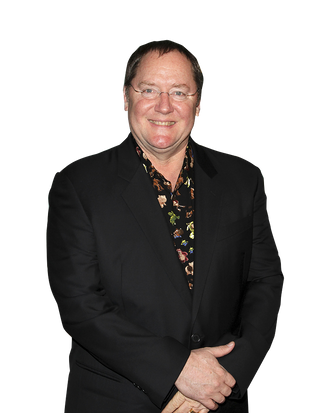

The first installment of Pixar’s Cars raked in almost $250 million at the box office when it was released in 2006 — a terrific haul by any measure, though not quite in the same stratosphere as, say, Finding Nemo or Up. Since then, though, the franchise has exploded in popularity, and it’s become one of Disney’s key financial windfalls, bringing in a staggering $2 billion in merchandise every year. Will this weekend’s Cars 2 keep up that crazy momentum? We spoke to its director, Pixar head honcho John Lasseter, about how this franchise became such a monster hit.
At what point did you realize that the Cars franchise had become such a phenomenon?
Yeah, it’s done something that no film in history has done, and it didn’t fit to any business convention. Typically, a big movie will be the biggest the year it comes out, and you can measure how strong the franchise is by the drop-off in the sales of the DVDs and the products. If that tail takes a long time to drop, you’ve got a strong franchise, but with Cars, it’s actually grown in popularity every year — dramatically, too! It’s sold over 10 billion dollars’ worth of products and DVDs since it came out. That’s, like, crazy.
It’s mind-boggling to me.
Even in places where the movie only did fair when it came out, it’s now gigantic. I find it really exciting to see little guys wearing a Lightning McQueen T-shirt or to see a Cars rolling suitcase in the airport, stuff like that. It’s really fun because you know that the characters mean a lot to them. That’s why I do what I do, to know that these characters have a place in these families’ hearts.
What is it like to direct and run a studio at the same time?
It’s difficult. The demands on your schedule are challenging. When you look at what I do … I’m the chief creative officer of Pixar Animation Studios, Walt Disney Animation Studios, and Disney Toon Studios, and I’m the principal creative advisor for Walt Disney Imagineering, where I go over there and help create rides and attractions and shows. Each one of those is a full-time job, and then on top of that I’m directing a movie, which is more than a full-time job.
So how do you do all that and not go crazy?
One way that I was able to keep up with all these other projects is the iPad. You know, the iPad changed my life! Steve Jobs is like a brother to me and he’s one of the founders of Pixar, and when the first iPad came out, I got one right away. I started loading onto the iPad some stills and drawings and stuff from the art department on Cars 2, and on the car ride home, I would look through this stuff. Then the supervising technical director on Cars 2, Apurva Shah, he wrote a special iPad application just for me called Review Tool where I can look at video and stills. Since I live about an hour away from Pixar, they started basically booking my drive time when I would get a ride with a friend, and I would sit and work in the car using this iPad app. One hour of review time on my iPad was equivalent to about three hours of review time in the studio — it was incredibly efficient. And now all the divisions I work with all have their own iPads. I’m just a big kid, so I enjoy it so much.
I read that you took 3-D pictures of your wedding. How does that work?
I’ve collected 3-D cameras, and I have this beautiful old Kodak 3-D camera that had to have been from the fifties. It uses 35-millimeter film, but you can send it to a couple places that will put it in slides, and you can look at it through these viewers in 3-D. We didn’t take that many, just a few, because it’s fun to me. I just love 3-D photography, I think it’s wild. In 1989, we did a Pixar short called Knick Knack in 3-D, even though there were no 3-D theaters to see it in, so I’ve always been excited by three-dimension worlds and characters. Why look at our world with one eye closed when we’ve got the opportunity to open the other eye?
Pixar has been putting out 3-D movies since well before Avatar made that such a priority for most studios. I’m curious, with all that experience under your belt, what have you learned about what to do and what not to do with 3-D?
What we try not to do is the obvious gimmick of having something come straight out at you. “Ooh, look out!” When I direct, it’s all about telling the story, and it’s very calculated how we use 3-D to help draw your eye to one thing, then another, then another.
Since you’re on the Academy’s Board of Governors, I’d love to get your take on the new Oscar rules instituted last week.
I think it’s awesome. The thing that we’ve been striving to do is to really keep the Oscars as relevant to today’s audiences as we can make it. Yeah, I’m really excited about it. It’s about refining the Best Picture and Animation categories just a little more.
Why did you think it needed to be refined? Certainly, the ten-nominees experiment seems to have been a good thing for Pixar.
Well, I just think it’s gonna be cool. What Bruce Davis was saying about his research is that when you look at the past ten years and use this certain level of criteria, there are some years where there would be five nominees, but other years would have had six, seven, nine. Now, the rules will reflect the quality of the movies. We won’t be filling a slot with something that’s substandard just because we have an open slot.




